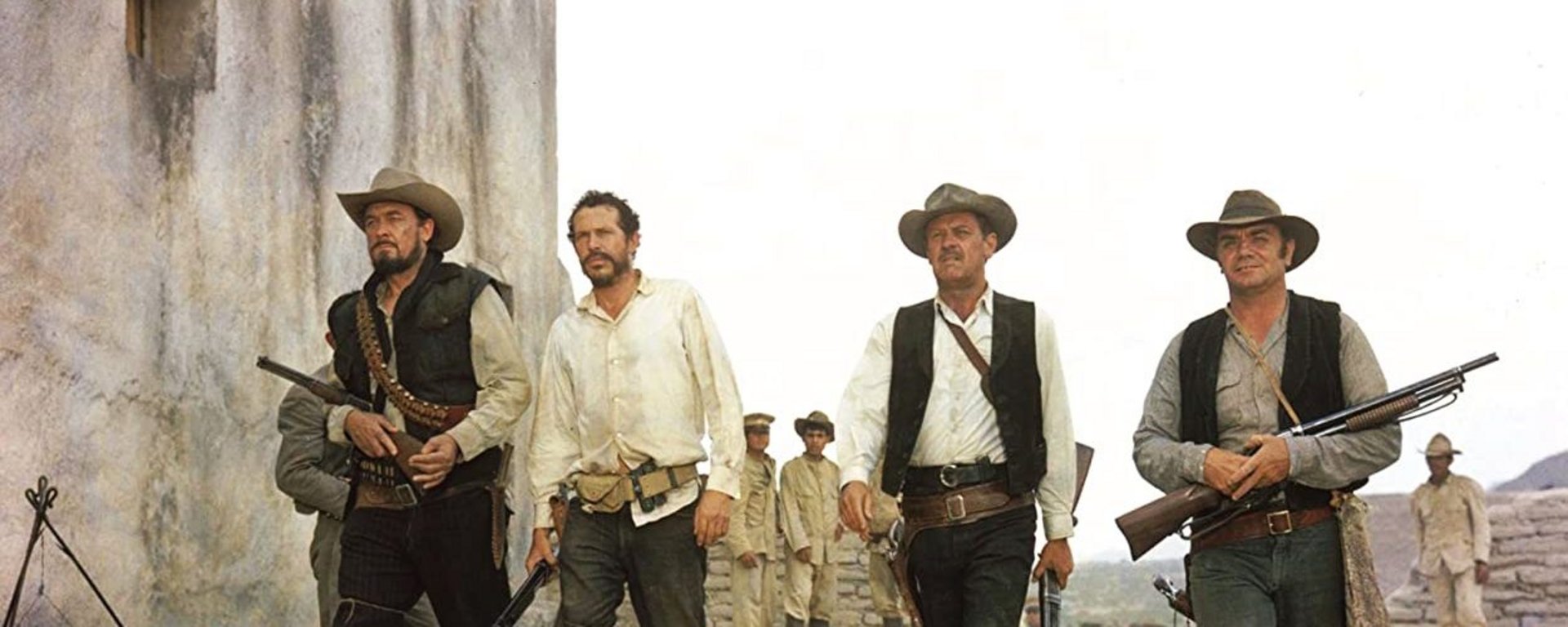
The Wild Bunch
Sam Peckinpah’s seminal western The Wild Bunch was first submitted to the BBFC in 1969. The film is set in 1913 and concerns a gang of aging outlaws under the leadership of Pike Bishop (William Holden). The gang flee to Mexico after what would have been their final score goes horribly wrong and they find themselves battling the changing times, the Mexican army and the bloodlust of a rival gang. The film consistently ranks among the best westerns of all time and makes many critics’ all-time favourite lists.
The film is noted for its multi-angle editing and its use of slow-motion photography, both revolutionary techniques at the time. It gained notoriety on its release for the strength of its violence, which was often achieved through the use of these new techniques. The climactic massacre scene in particular makes use of slow-motion to show bullets ripping into the bodies of the outlaws in grimly explicit fashion. The controversy gained particular pace in the United States, where the film was seen to draw parallels with the contemporary realities of the Vietnam War.
Peckinpah himself said that The Wild Bunch was intended as a rebellion against sanitised, bloodless television violence and the glamorisation of violence seen in many Hollywood films: "The point of the film is to take this façade of movie violence and open it up, get people involved in it so that they are starting to go in the Hollywood television predictable reaction syndrome, and then twist it so that it's not fun anymore, just a wave of sickness in the gut ... It's ugly, brutalizing, and bloody awful; it's not fun and games and cowboys and Indians. It's a terrible, ugly thing."
The Wild Bunch was passed X for UK cinema release in 1969 after seven cuts had been made to moments of violence in the massacre scene at the film’s climax. These small cuts were to images of blood spurts after bodies are hit by gunshots and to images where a man is seen to be ‘gloating’ as he fires a machine-gun. The total amount of cut material amounted to just seconds. The subsequent lack of bloody detail and sadism was intended to lessen the impact of what was felt to be a very realistic and visceral scene. However, the cuts did not assuage the concerns of some members of the British public and, in a letter from the time, a correspondent complained that: "I felt unable to continue to watch the film…It appeared to me to be nauseating in its pointless violence…The exploitation of violence for its own sake cannot be tolerated as entertainment in the commercial cinema."
The video of The Wild Bunch was submitted soon after the BBFC was given the authority to classify such works under the Video Recordings Act 1984. It was first examined in May 1984 and great consideration was given to the violence in the massacre scene and to the fact that cuts had been written for the film version. Of the three examiners who saw the film on its first viewing, two felt that the violence was still strong enough to warrant two small cuts at 18. These examiners acknowledged in their reports that the film is ‘one of the most brilliant pieces of film-making there has ever been,’ but felt that "the artistic defence is lessened by the fact that many average film-goers … may not know that this is such a classic."
In July 1984, the film was seen by the BBFC’s Director James Ferman, to whom the final classification decision had been referred. He stated that the "context and knowledge of the genre mitigate the violence, which is nevertheless tough.’ Ferman deliberated on the two cuts recommended and ultimately decided that ‘the machine-gunning would not be reduced at 18 today and the blood spurt is not important enough to justify cutting in a great many videos already on release." The film was therefore passed at 18 without cuts. Due to the backlog of video works created by the introduction of the Video Recordings Act, the final certificate was not issued until April 1988.
A restored ‘director’s cut’ of The Wild Bunch, lasting some six minutes longer than the original, was submitted for classification on film in June 1995. Examiners stated that the ‘violence is as shocking as ever’ and did not hesitate in awarding the film an 18 certificate. The video submission of this restored version was also given an 18 when it was last submitted in April 1998.